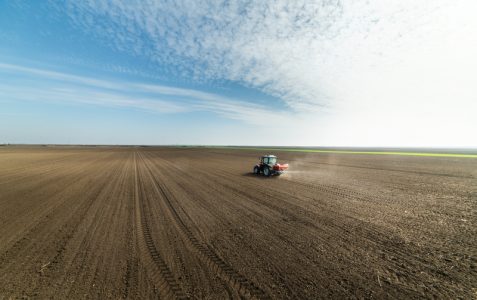Global fertilizer markets and the risks associated with the current conflict between Ukraine and the Russian Federation are a palpable reality.
The Russian Federation and Ukraine are among the world’s leading producers of raw materials. Both countries play a role as major suppliers to global food and fertilizer markets, where exportable supplies are often concentrated in a few countries. This concentration could expose these markets to greater vulnerability to shocks and volatility.
The Russian Federation is a key exporter of fertilizers. In 2021, the Russian Federation ranked as the world’s leading exporter of nitrogen fertilizers and the second largest supplier of potassium and phosphorus fertilizers.
Twenty-five countries depend on fertilizers from the Russian Federation with an import dependence of 30% or more for N, P and K fertilizers. Many countries located in Eastern Europe and Central Asia have an import dependence of more than 50% on Russian fertilizers for the three ingredients. Ukraine is not listed as a dependent fertilizer exporter, with the exception of purchases from Benin and a few European Union countries.
Fertiliser costs on the rise due to elevated gas prices
Due to the use of gas both as a raw material and as an energy source for powering the synthesis of fertilizers, when gas prices rise, fertilizer costs follow soon after. Gas prices have reached record breaking prices, driving the cost of fertilizers up by 151% on an annual basis. Resulting in a scenario where producers and farmers find themselves under significant financial pressure.
Upcoming harvests
The UK’s Agriculture and Horticulture Development Board looked this week at what could the impact be on harvest 2023 from high input costs. It found that margins could well be squeezed to a greater degree next season due to the higher input costs.
Megan Hesketh, AHDB arable senior analyst, said these higher input costs could see some farmers either reduce their nitrogen applications, reduce their cropping areas, or both. These adjustments could be necessary for businesses to optimise their margins, or because of a less liquid cash flow.
Barley, rapeseed oil and wheat decline
Under this current scenario, experts believe that there could be a production decline in rapeseed oil, wheat, and barley within the UK for the 2023 harvest. The fluctuating prices of fertilizers and their availability must be taken into account for any future projections regarding production levels. Recent anecdotal quotes are lower than those of March but still remain above the £700/t mark. However, further price volatility cannot be discarded due to availability challenges and current gas prices.
Grain prices
Under the current higher input/fertiliser cost scenario, farmers may look to reduce the amount of farmed land. Therefore, they will most likely cut the least productive land first aiming to mitigate yield impacts caused by fertilizer application to a certain extent.
The price of grains and the potential margins for growers are another important issue that must be taken into consideration. Last week, UK Nov-23 futures closed at £270.65/t . This represents an increase of of £96-60/t since last July when the contract opened.
With the increase in the prices of fertilizers and other energy-intensive products as a result of the conflict, overall input prices are expected to rise considerably. Higher prices for these inputs will first translate into higher production costs and eventually higher food prices. They could also lead to lower use of inputs, which could reduce yields and production in the 2022/23 harvest and create an increased risk to global food security in the coming years.
